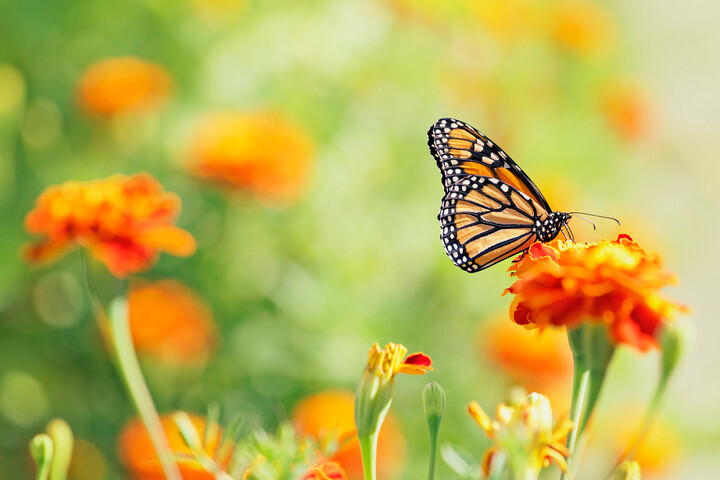Your garden can sustain bees and other insects that pollinate this season, too, regardless of where you live.

Sadly, more than 40 percent of pollinators-including bees and butterflies, who help spread pollen across gardens and stimulate crop growth-are currently at risk of mass extinction. That's why experts at the National Pollinator Garden Network launched an initiative called the Million Pollinator Garden Challenge, designed to motivate Americans to reverse damage dealt to natural habitats by planting new gardens smack in the middle of their communities; even if they live in one of the largest cities in the world.
Three years after launching the initiative, more than one million gardens designed to benefit pollinators have been planted across the United States-and experts behind the movement have named five metropolitan areas as the most pollinator-friendly cities, including New York City and the larger Tri-State area at the top of the list. Those living in Atlanta, Chicago, Miami, Philadelphia, and Washington, D.C., are also planting more gardens to attract bees and butterflies, proving that you don't need much space in order to get started.
"It really doesn't take much to get started. Even an empty, vacant lot can provide a haven for pollinators," says Mary Phillips, senior director for the Garden for Wildlife Program and the co-founder of the National Pollinator Garden Network, the group behind the movement. "People can just really foster a habitat just about anywhere, as these plants are pretty hardy."
RELATED: HERE'S HOW GARDENING BENEFITS YOUR HEALTH
In New York City, for example, two of the most successful registered pollinator gardens are found in the Highline and Battery Park City, Phillips says. If you're looking to create a pollinator garden of your own, but don't have access to your own private plot of land, Phillips says that many metropolitan schools and places of worship have opened their doors to initiatives to add more green spaces; and most likely would welcome your efforts with open arms.
Even if you have access to just a few square feet of outdoor patio space, you can build a friendly environment for pollinators by investing in a set of garden containers and "thinking in threes," Phillips says. Choose to plant seeds that will provide blooms and nectar for pollinators across the seasons, with spring, summer, and fall in mind.
"Some of the best plants to invest in are perennials that are native to the region you're in and also flowers that can provide nectar to bees throughout the season," Phillips says. "You'll also want to invest in what we call 'woodies;' trees or shrubs that provide shelter for pollinators, which can share space with flowers in garden containers, and should also be native to the zip code you live in." For those living on the east coast, for example, planting a Southern Magnolia or a simple fringe tree could be a great anchor for any garden, as these trees provide shelter and nectar for pollinators, she says.
You could even focus on planting herbs, like dill or parsley, as these garden essentials actually play host to the larvae of the Swallowtail butterfly. And if you're in an area where hummingbirds are present, arranging native honeysuckle to grow on a trellis outdoors can attract hummingbirds and help them spread pollen across the area.
But the best addition to any pollinator garden is rather simple: native milkweed. "Milkweed is the only plant that monarch butterflies can raise their young on," Phillips says. As caterpillars hatch onto the leaves, they also ingest the milkweed plant, which allows them to naturally repel predators due to milkweed's toxic properties. "This is why Monarch butterflies have such vivid coloring; it's a warning sign to predators that they're toxic due to consuming milkweed," she says. Plus, milkweed also flowers and provides nectar for bees to pollinate other plants with.
To help you get started on your own pollinator garden, the National Wildlife Federation has put together a database of plants that are native to your area-simply plug in your zip code and learn more. Phillips has also put together a short guide to best practices on the NWF's blog right here.